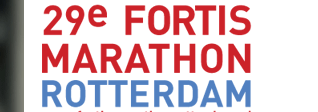
day 60, came back from a 20k run last week and the evenings are becoming chilly (5°C) at 61degrees north (helsinki). wanted to hit the stop button for the sports track timer, but it’s not as a direct option, so you have to go through the menu. it gets really tricky to operate the nokia n85 with stiff fingers via the soft keys. it would be better if “stop” is dedicated to one of the three soft keys (left, middle or right). or even better, there really should be another input paradigm used, just tapping the device or voice input as outlined in part I.
well indoors - and gradually warming up - comes the neat part of the sports tracker app, uploading the run to the service. this procedure fits well in-between closing the door behind you and reaching the shower. you select the workout from the calendar in the application, open the summary and select upload from the options menu. what follows is a number of pop-up dialogues that are annoying:
- share with others? -> no / yes, with friends / yes with everybody
- Search for associated media items? -> yes / no
- Upload media to service? -> yes / no
those could be covered in the settings of the app or with a “do you want to use this as a default option” when uploading the first time or as service side things to adjust via the PC web interface. what the user wants is a one click mechanism and it’s all uploaded to the server. you shower, settle in front of the pc afterwards with a steaming cup of tea, check the just run route, distance, go through the taken pictures or videos and brag to your friends about it by spamming their inboxes with a link to the achievement.
one more aspect that came up while running the intervals last week. the lap time is not displayed during the run. checking intermediate times during each effort, for a 1000m run at e.g. 200, 400, 600 and 800m, is impossible.
don’t have any screen shots handy here. if anyone finds a an application that can take screenshots of the most recent S60 devices, those without an edit key, please let me know. the ones I found, screenshot for Symbian 3.0 and ScreenSnap need the edit key to capture the screen, that key is missing on the nokia n85 and nokia e71.
a sports tracker review part III will follow next week and will look at the web service. stay tuned…
Tags: nokia e71, nokia n85, nokia sports tracker, screenshots

here between week 8 and 9 of the total 57 weeks (=400 days) and things look good. not for the bankers but for this project. hm, there’s a thought, will the banking crisis’ stock market effect last as long as this project?
anyway, another set of yasso 800s on day 52 (tuesday) indicates progress over the previous similar session two weeks ago. an average time of 2:44min per 800m run would suggest a marathon time of 2:44h (see explanation of yasso 800s here). mh, that’s not to be trusted. i think, i got used to running shorter distance intervals too quickly. let’s add at least a 10-12min error margin. that would make a marathon time of around 2:56h, still way (too much?) ahead of the progress curve.
the hill runs yesterday, on sat should have been 10, but turned out to be just 6. well… they’re gonna be 10 runs next time…
with two weeks to go to a first 10k race (see the masterplan), next week’s going to be a bit less both in distance - going down from 92km to around 80km) and intensity (fewer interval sessions). really interesting parts are the longer interval runs on wed, 2 x 2000m + 3 x 1000m, and the fartlek on sat, 2 x 4km, that’s where speed meets endurance. hope those won’t give too much reason for procrastination… there should be more of those runs in the coming weeks.
Tags: training
click the picture to enlarge
day 55 since having bought this new pair of adidas response running shoes, i was wondering how long they might last. especially on today’s long run, 24km - the above picture was taken towards the end, it got dark at around 6:30pm, see this interactive map - i reached 500km in those pieces of training equipment since the beginning of september. i like to think of running as an uncomplicated and inexpensive sport, hence especially the sports equipment part should not in anyway be in the foreground and use much resources (= time and money). so asking a shoe salesman when to get new shoes is like asking a barber if you need a haircut!
having said that i was surprised to find that replies written by shops mentioned longer milages than the various running forums on the internet. of course, wear and tear of your shoes depends on your weight, stride or running style, e.g. pronation can use up a pair of shoes on the outside or inside depending on pronation. further the ground you run on plays a role, as does the climate and environment. assuming “normal” circumstances and the pair is used for running only (without kicking the football in-between!) here two selected recommendations from the top of a google search.
- the runner’s guide, john hopple’s own extensive running guide says 300 - 500 miles (~ 500 - 800km)
- running fit a shop in michigan (usa) recommends 400 - 600 miles (~ 650 - 950km) or every 12 month
there are of course more reviews and comments on this topic to be found.
one really good reply from adidas i got when sending over the question to them came from hans, a customer service consultant for their running products. assuming 75kg and 80km/week, and an approximate stride length of 1,40m results within half a year of running in a total load of 111.000 tons (=111.000.000 kg) per foot!!! this is indeed quite a heavy load to bear for both feet and shoes, whereas a normal running shoe weighs about 350g. hans still recommends for the adidas response 16 a milage of 800 to 900 km. one way to keep track of the shoes is to check the softer cushioning material in the shoe sole for horizontal crinkles (click on the picture to enlarge it). hans mentioned if those appear heavily it might be time to replace the shoe. let’s see, right now i feel still really great in this pair while running, wouldn’t surprise me if after 1200km they’re still stuck to me feet.

nokia came out with this neat little application called sports tracker a while ago, sometime in the fall of 2007, I guess. in a nut shell, it tracks the route of your run, attches media files to that run if you’ve taken pictures, videos, or or other masochistic evidence while out there and let’s you very easily manage a diary on the sports tracker beta service. the application for your s60 based mobile device can be downloaded and installed from here, see that you pick the correct version for you phone model. there are many blog posts on the basic functionality of this application - a really good one here from our eseries friends - hence the focus here on using the sports tracker (version 1.82 on a nokia n85) in regular running practice.
When you go out for a run, you switch the application on. then the app activates the gps functionality to find the satellites. that can sometimes take more than 15 or 20 seconds, which is annoying. it would be better if any kind of location mechanism, using cell id if gps is not available, is used right away. just let me get going and not standing there gazing at the phone screen while waiting for the app to find the location.
but the real challenge comes when you want to start your run. the button or soft key interface always requires you to have the mobile device in your hand. therefore you can press “start” on the application, but then still can’t really start running yet because you have to concentrate on stowing the mobile device away, e.g. putting it into an armband, assuming you don’t carry the device in your hands all the time. this makes the sports tracker not very usable in a competition or when out on a test run. the problem is magnified when doing interval runs and using the lap time function to clock the efforts. at the beginning and at the end of each run, it requires considerable focus to get the device into the right state (unlocked, no other application being on top) and press the right button or soft key. this really challenging when the heart rate is at 180 and the fingers are slightly numb. probably what’s needed is another input paradigm, tapping the device or speech input. so that the phone can always sit in its pouch or armband and just by tapping it you start/stop/lap the timer. or then with speech input, the runner just says “start”, “stop” or “lap”. in both cases there needs to be both visual and non-visual confirmation, the latter at least a beep or better a natural speech output that tells the performed function and e.g. the clocked time/lap time. this could even beat the wrist watch interface that’s common with all heart rate monitors and obviously sports watches.
however, there’s not just negative to say about this little application. the wide spread deployment of it speaks for itself. the latest version (1.82, download link here) has a couple of good error fixes, e.g. the GPS connection is not interrupted anymore while out there running. and it has a neat overlay, or here underlay, of a grey scale map, this looks cool … on a larger screen
in part 2 we look at the upload to the sports tracker service, and the service itself. stay tuned.
Tags: nokia sports tracker

the plan said 10×800m yassos, the mental threshold towards those and the sore bottom from the hill runs the day before voted for 10×400m. since the latter two were in the majority and it’s democracy we want to uphold, 400s it was today. those short interval runs tend to be a bit like fast food, quickly done and there’s not much pain (and no gain?). each run goes this way, acceleration up to 50m, finding the rythm until 100, keeping the rythm on the straight between 100 and 200m, at 200m starting to breathe heavier, focus on the second curve, not to get out of the rythm. open mouth panting like a railroad engine, home straight to the finish. it’s exhaustive for 25sec max. that’s little pain compared to the yassos or 1000m runs where slowing down after 450m or 500m needs to be avoided and the whole rest of each effort is a bit of a fight.
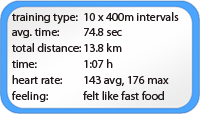 the runs were good, on average just below 75seconds, slightly faster than two weeks ago. perhaps the 400s intervals aren’t so relevant from now on anymore or they need to be structured differently, e.g. with shorter resting time in-between the efforts, e.g. 1,5 minutes only. don’t know yet.
the runs were good, on average just below 75seconds, slightly faster than two weeks ago. perhaps the 400s intervals aren’t so relevant from now on anymore or they need to be structured differently, e.g. with shorter resting time in-between the efforts, e.g. 1,5 minutes only. don’t know yet.
Tags: 400m, interval training
click the picture to enlarge
things are going well as the recently introduced progress page documents, black dots below the line, that’s ahead of the curve.
a new form of training today should introduce some new triggers to the running training program, uphill runs, 2 minutes long. having run along the baltic sea’s shoreline for most of the time, the toughest hills around might have just been bridges that span over the sea’s inland bays. it actually posed a real challenge to find a hill in helsinki’s north-east city area long enough for 2 minutes without first having to drive somewhere. finally, with a 6km warm up, close to herttoniemi an eastern helsinki city district, a sufficient long path appeared that’s used for cross country skiing practise during the winter months.
the 8 repetitions were supposed to be 10, but it felt already “enough” after 8. after a couple first ones, speed mgmt kicked in, i.e. to control speed on the steeper uphill parts so that the pain start later. however, that’s exactly not the way those should be run as found out afterwards on runner’s world. uphill efforts shold be run aggressively to enhance both speed and strength in the legs. preferably those runs could be shorter, but they’re most efficient if run all-out.
the day after comment: my buttocks hurt - it was effective
Tags: uphill training

warning, this post is geeky, if you don’t get any kicks from math equations and modelling, you might want to take a break this time.
it’s your friend who studied math or physics you need to go to, when it’s time to solve one of these difficult problem that life imposes on you. well sometimes it might be your shrink as well… anyway here it’s a model that’s needed, a systematical approach that provides some sense in this universe of coincidences.
antti, a friend at work, he’s such a bloke, called him last sunday and asked him for help with figuring out a good approximation of how progress in this marathon preparation could be modelled. a couple of days later we sat down to crack this nut.
the first thing that became clear is that a natural function, i.e. e^x or its inverse ln(x) seem most reasonable, because most natural processes progress this way. since running improvements don’t happen exponantially - the incremental improvements tend to become smaller the better you are - we picked the ln(x) function.
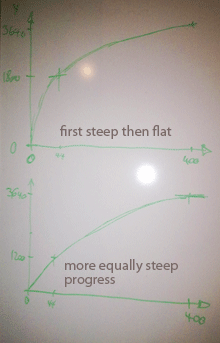 we knew that the x-axis is the time, i.e. the 400 days, from 0 to 400. the y-axis is the time of of improvement in seconds from an assumed marathon time at day 0, here 3:30h . at day 0 there’s zero seconds of improvement, at day 400 we need to go below 2:30h, which means an improvement of a bit more than one hour or 3600 seconds, 3640 seconds were used. what was totally unclear is where on the ln(x) function we would be. in the beginning, where at first the slope is very steep and hence the time improvements come in very quickly after only a couple of weeks of training, but the improvements flatten and in the last 100 days there’s only improvements of a couple of minutes. or are we more towards the end of the ln(x) function where improvements come in more equally distributed through the whole time of 400 days?
we knew that the x-axis is the time, i.e. the 400 days, from 0 to 400. the y-axis is the time of of improvement in seconds from an assumed marathon time at day 0, here 3:30h . at day 0 there’s zero seconds of improvement, at day 400 we need to go below 2:30h, which means an improvement of a bit more than one hour or 3600 seconds, 3640 seconds were used. what was totally unclear is where on the ln(x) function we would be. in the beginning, where at first the slope is very steep and hence the time improvements come in very quickly after only a couple of weeks of training, but the improvements flatten and in the last 100 days there’s only improvements of a couple of minutes. or are we more towards the end of the ln(x) function where improvements come in more equally distributed through the whole time of 400 days?
antti therefore suggested an equation that would let us figure this out mathematically. very elegant thing this system of equations.
y =a * ln(x+b) + c
with three variables a, b and c we needed three data points to get the equation ready to roll. with day 0 and day 400 assumptions, 3:30h (= 0 seconds improvement) and sub-2:30h (=3640 seconds improvement) respectively, we had two already. the third came from a yasso 800s training on around day 40. with some “management adjustment” - out of the approximately 3:00h became 3:10h. now we had three equations and could calculate the three variables a, b and c. we spare you the actual values, calculated to the fourth decimal. the final result, the progress curve is on the progress page.
finally there’s sense in gathering data points every now and then. the 10k’s start in november and will provide good first indications.
Tags: progress
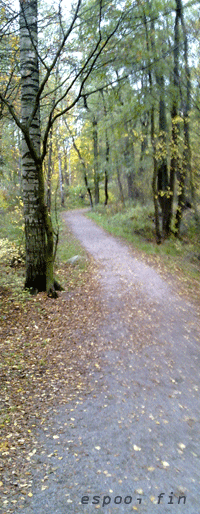 out of the office, into the running shoes. yes, still using this nice pair of adidas response shoes, they’re not so white anymore but do a superb job, now after 500km they just got warmed up. the closeby foresty patch along th ecoast line feels like a soothing oasis after a day fighing with powerpoints, portfolio implications and key trends. the gravel makes little scratching sounds at each step - until i put on the social jukebox and listened to music from the mobile running companion over the in-built speakers. always fun to observe people when running past them.
out of the office, into the running shoes. yes, still using this nice pair of adidas response shoes, they’re not so white anymore but do a superb job, now after 500km they just got warmed up. the closeby foresty patch along th ecoast line feels like a soothing oasis after a day fighing with powerpoints, portfolio implications and key trends. the gravel makes little scratching sounds at each step - until i put on the social jukebox and listened to music from the mobile running companion over the in-built speakers. always fun to observe people when running past them. ![]()
it’s the long run today, 24km in this case. the long run should be for 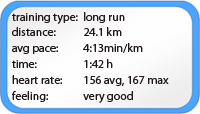 non-marathon training somewhere between 18 and 25km and during marathon preparation from 25 to beyond 30km, the idea is to run at a slower pace, about 80 sec/km slower than in a 10k race, and train fat burning. the relation between burning glycogen and fat shifts towards fat when running slower. one could conclude that walking must be the ultimate fat-burning excercise - sorry folks with the sticks that use to block my way, that’s an error in the logic. the total amount of burned calories (glycogen + fat) on slower kinetics goes down as well, so no chocolate cake afterwards, that’s reserved for the runner. the polar heart rate monitor clocked 1621kcal for the run, the lunch time chicken steak is definitely gone.
non-marathon training somewhere between 18 and 25km and during marathon preparation from 25 to beyond 30km, the idea is to run at a slower pace, about 80 sec/km slower than in a 10k race, and train fat burning. the relation between burning glycogen and fat shifts towards fat when running slower. one could conclude that walking must be the ultimate fat-burning excercise - sorry folks with the sticks that use to block my way, that’s an error in the logic. the total amount of burned calories (glycogen + fat) on slower kinetics goes down as well, so no chocolate cake afterwards, that’s reserved for the runner. the polar heart rate monitor clocked 1621kcal for the run, the lunch time chicken steak is definitely gone.
anyway, the long run is essential to all running, especially if you have some ambitions on what so ever distance above 400m. in addition to burning fat it increases your oxygen intake max VO2, the amount of oxygen you are capable to provide to your muscles, it maximizes stroke volume (the amount of blood ejected from the heart with each beat), and helps with new red blood cells. and finally, of course, there’s a mental angle to is as well - going out and knowing the road ahead is 24km long. the runner’s world had an article on the long run.
of course, in the end it was run too fast, that often happens when running alone, there should be a friend joining. that’s in general something that’s different here in europe’s north-east, people often prefer to run alone. very different in neighbouring countries such as sweden, where runners of all kinds of distances go together for a distance training session. or in germany and the UK, where long distance groups and clubs have popular collective sunday morning or weekday evening runs.
Tags: fat burning, long run, maxVO2

helsinki is often referred to as the design center of the north. once you looked around at a nice sunny autumn evening, you understand why. the place is albeit functional really just beautiful. the surroundings are kept relatively clean, many areas feature buildings that are modern but not unaesthetic and nature puts out a dramatic color display. with a slow run, a 10k active relaxation run, on the schedule, it was a joy to halt every now and then to capture some breathtaking views on film,… eh, on the memory card in these digital times. btw all pictures were taken with the nokia n85, you definitely can leave your separate digital camera at home!
the places were the pictures were can be seen on this interactive map.
having had equally beautiful views on your evening run?
Tags: helsinki impressions, nokia n85

all green, good week! with a total distance of 83.5km and two interval sessions there’s a good balance of speed and endurance. the sixth week starts the second part of the first episode where speed work should pick up in preparation of the series of 10k runs from november onwards.
the 400s on monday felt quite easy, it’s still the longer intervals beyond 1000m that are the weak spot, need to soon start building in 2000m and 3000m runs as well, those will hurt … masochism definitely. it was raining on tuesday and wednesday, hence the average pace was a bit higher, it just made me wanting to go back in again, on thursday not even out. the yasso 800s were ok, kind of a first data point or more or less informed guesstimate on where about we are with the overall marathon fitnes - somewhere around 3:00h, kind of ok for now. quite tired on the weekend, but some good accelerations on the sunday run with which i scared some walkers off the forest path, that’s ok too. ![]()
the coming week sees 3 highlights, the 8×1000m in 3:30min in the beginning, a 5k company fitness run that we’ll take as a 5k test out of full training in the mid and 10x 2min uphill runs. are there actually long enough hills around here in helsinki? need to ask around. a total of 85km will be a decent total stretch.
Tags: hill runs, interval training, yasso 800s









